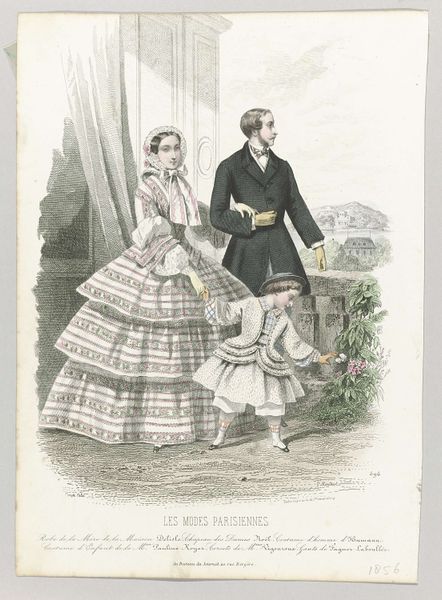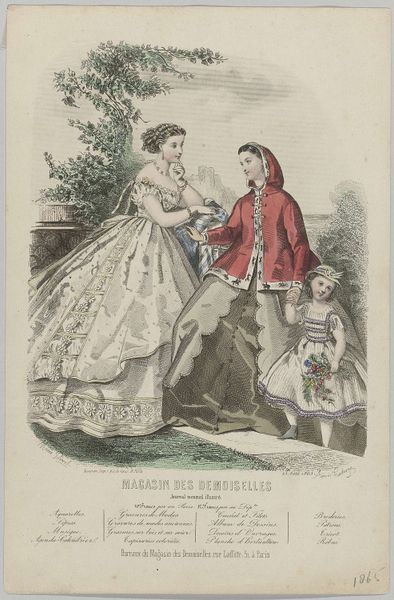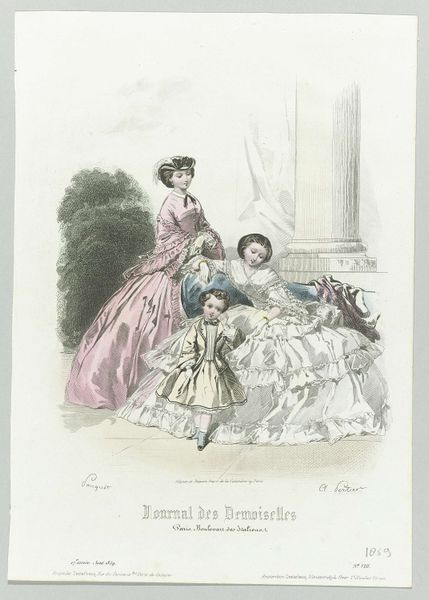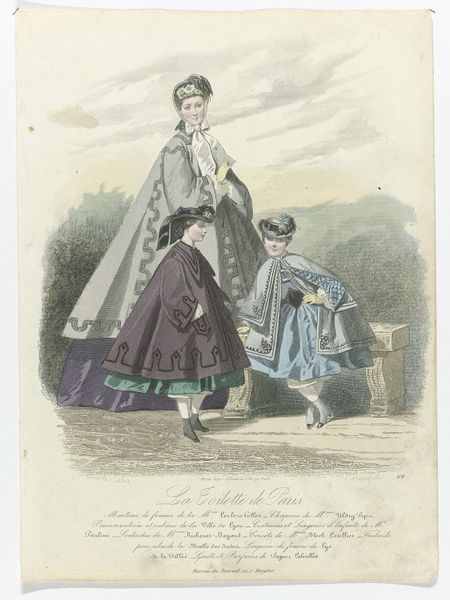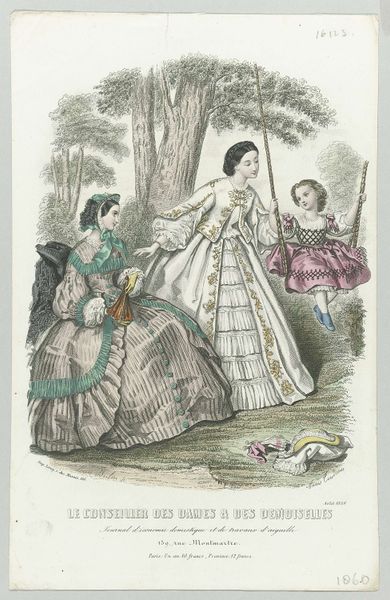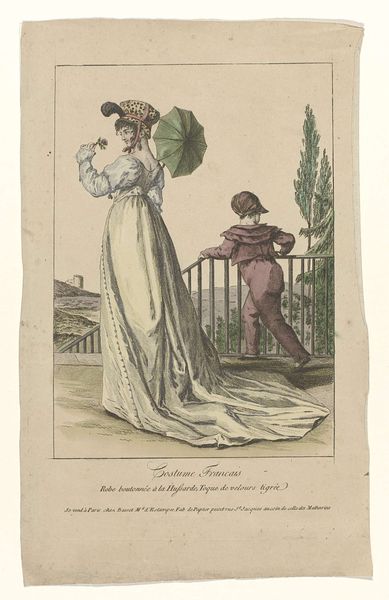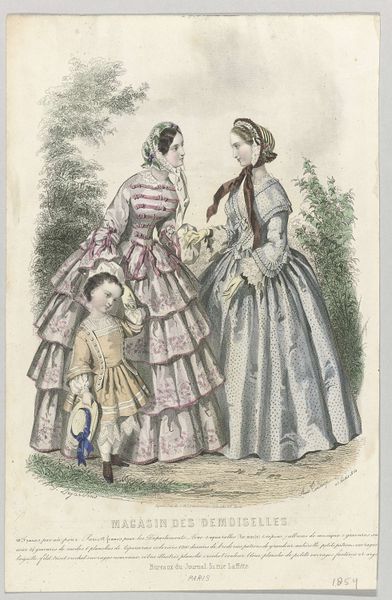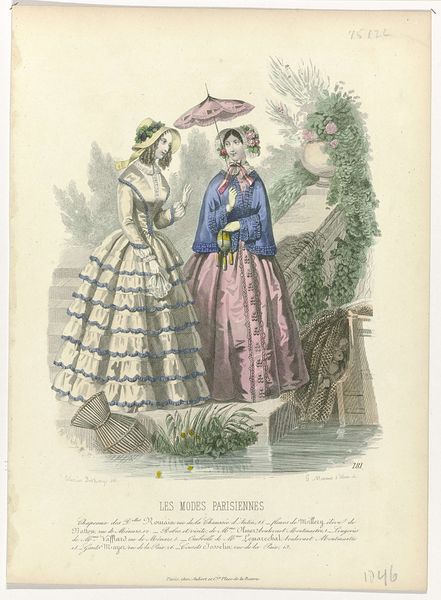
Les Modes Parisiennes, 1854, No. 601 : Toilettes d'enfants (...) 1854
0:00
0:00
Dimensions: height 268 mm, width 190 mm
Copyright: Rijks Museum: Open Domain
Curator: The watercolour illustration before us, titled "Les Modes Parisiennes, 1854, No. 601 : Toilettes d'enfants (...)" was created by Gabriel Xavier Montaut d'Oleron. It beautifully exemplifies romanticism through the portrayal of figuration in this genre scene. Editor: There's an almost performative aspect to it. The arrangement of figures and that swan! It has an oddly staged, though pleasant, tableau quality to it. A snapshot of idealised family life in 19th-century Paris, perhaps? Curator: Exactly. The "Modes Parisiennes" series appeared in fashion journals aimed at the bourgeois woman. These images were more than just style guides, they shaped aspiration and the performativity of middle-class identity and gender roles through consumer culture. Look how carefully the women’s and children’s fashion are highlighted! Editor: And there’s the underlying politics of such publications. Consider who had access, both financially and literarily, to engage with such ideals and the associated labour practices related to garment production. We see the performance of leisure here but not the backstages that enable it. Curator: It is precisely this contrast that warrants attention. Montaut d'Oleron captured the external aesthetics while these images also mirrored shifts in power, consumption, and class consciousness within society. These images perpetuated gendered expectations as well. Editor: Right! We see women depicted primarily through their attire and social roles connected to child rearing. So while the technique might feel soft and pleasing, the embedded societal structures and constraints should be scrutinised, even in such "simple" imagery. It invites important discussions about gender and class through the looking glass of historical fashion. Curator: Absolutely, what might seem as merely a quaint visual is rife with meanings once we unpack its relationship to the era's socio-political currents and aesthetic ideals. Editor: Precisely, now when I look I think of this work as a lens that refracts larger structures, not only to admire, but also critically assess, these reflections.
Comments
No comments
Be the first to comment and join the conversation on the ultimate creative platform.
